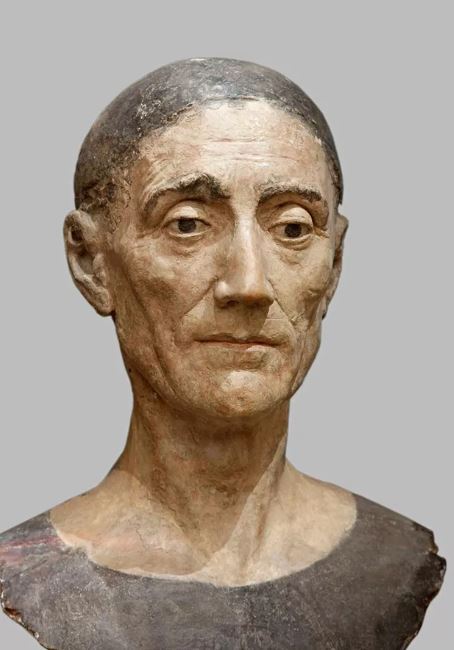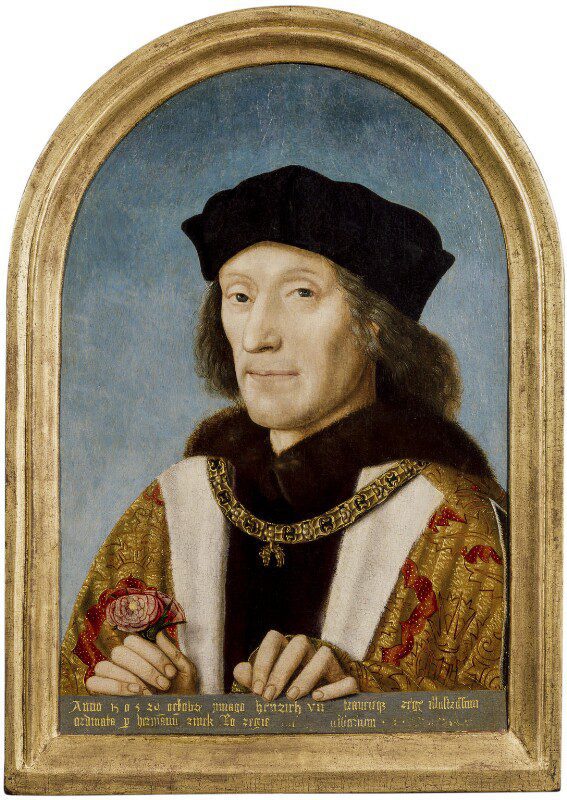Stephen Martin
Durham, United Kingdom

Westminster Abbey has a superb effigy that was made for the funeral of King Henry VII. (Fig 1) Henry, born in 1457 and deceased in 1509, was famous for defeating Richard III in the Wars of the Roses. The effigy has such breathtaking detail that it was probably made from a death mask.
Its quality reflects the professionalism of Henry’s Court. He employed historians, poets, musicians, and composers. Though not a musician himself, his Court influenced his highly musical son, Henry VIII, and his keyboard virtuoso granddaughter, Elizabeth I. He built the first English royal palace that had a designated library.
The Italian sculptor Pietro Torrigiano appears to have come to England at the request of Henry VIII after his father’s death. A protégé of Lorenzo de Medici, Torrigiano had also been responsible for breaking Michelangelo’s nose in a row when they were students, describing the sensation of inflicting the punch in grizzly detail. The timing of his visit does not fit with the date of a death mask and funeral effigy, but it does suggest that he studied them for his terracotta bust of Henry VII, now in London’s Victoria and Albert Museum. The plaster of the effigy face has more detail, including lower eyelid bags and wrinkles and an apparent scar deforming the right eyebrow. No facial injury was ever documented—was Henry hit by something in an accident or in battle at Bosworth or Stoke Field?
A Netherlandish portrait of 1504, traditionally accepted as the work of Michel Sittow, (Fig 2) was painted during marriage negotiations with Margaret of Austria when Henry was a widower. It shows uneven eyes with similarly placed reflections on both irises, gravitating away from a squint or nerve palsy of an eye muscle. The portrait may show swelling of the lower left eyelid or a right ptosis (eyelid droop), or both. It is known that Henry’s sight deteriorated in his later years, but he kept his fear of blindness secret, confiding only in his mother, Margaret Beaufort. Henry applied traditional eye lotions of fennel, roses, and celandine to bathe his eyes but without success. The lotion may have made his eyes worse.

It has been suggested that this work was not done by Sittow because of the poor quality of painting of the eyelids, but an image of swollen eyelids would explain the appearance. Sittow was definitely working in Margaret of Austria’s Court at the time. An infrared reflectogram of the sketch, as well as the general style of the rest of the face, are similar to Sittow’s contemporaneous portrait of a man in the Mauritshuis. In both pictures, the hands look to have been done by a studio assistant. The received wisdom of Henry’s originally attributed artist may yet stand.
Around 1505, Henry commissioned a new history, Anglica Historia, from the Italian philosopher and chronicler Polydore Vergil. He described Henry in his old age as “slender, but well-built and strong … his eyes were small and blue, his teeth few, poor and blackish; his hair was thin and grey; his complexion pale.” There is also a reference to Henry having gout. He often felt poorly with the coming of spring and struggled to attend Mass at Easter 1509. He died two weeks later, with suggestions of asthma and tuberculosis.
In his later years, following his wife Elizabeth’s death, he was reclusive, perhaps also influenced by the threat of so many rebellions. Some of these were at the hands of Richard III’s sister, Margaret, née Plantagenet, Duchess of Burgundy. Widowed and stripped of her domains, she became a nun, albeit still a scheming one. If Henry also had clinical depression, he did at least earlier have the mercy, good humor, and decency to appoint Lambert Simnel after his rebellion to work in his palace kitchen. Henry knew he was a promising chef. Thanks to that, we have the Simnel cake.
A tuberculosis death seems less likely given Henry’s lasting strength and older age, but an asthma or obstructive pulmonary disease diagnosis is interesting. The effigy shows prominent trapezius and sternocleidomastoid neck muscles when compared with the overall lean build.
That suggests a degree of lung damage from emphysema. These accessory muscles of respiration work hard in Type I respiratory failure, while the heart still pumps adequately and respiratory drive is sustained. Such patients are therefore thin and pink, unlike the next stage, when the drive to breathe declines and the heart fails, causing cyanosis and edema. Did Henry simply die of common heart disease? He was keen on the development of artillery. We now know that gunpowder smog induces pulmonary inflammation, which could have triggered his chest disease. Even modern military small arms can reduce lung function slightly—how permanently needs further research.
Further reading
- Bindoff ST. Tudor England. Pelican Books, London, 1950.
- Williams N. Gen Ed. Antonia Fraser. The Life and Times of Henry VII. George Weidenfeld and Nicholson Ltd and Book Club Associates, London, 1973.
- “Henry VII and Elizabeth of York.” Westminster Abbey. https://westminster-abbey.org/abbey-commemorations/royals/henry-vii-and-elizabeth-of-york. Accessed December 2022.
Acknowledgements
Thanks go to Christine Reynolds, Assistant Keeper of the Muniments at Westminster Abbey, for her kind help. Henry’s funeral effigy is on display in The Queen’s Diamond Jubilee Galleries of the Abbey.
STEPHEN MARTIN is a former police surgeon and retired medicolegal expert. With his wife of many years, Khwan Phusrisom, they put his court report fees into an art collection, now a museum and education center, which they run for children in Thailand and other less privileged areas of Southeast Asia.
Highlighted in Frontispiece Volume 15, Issue 2 – Spring 2023

Leave a Reply